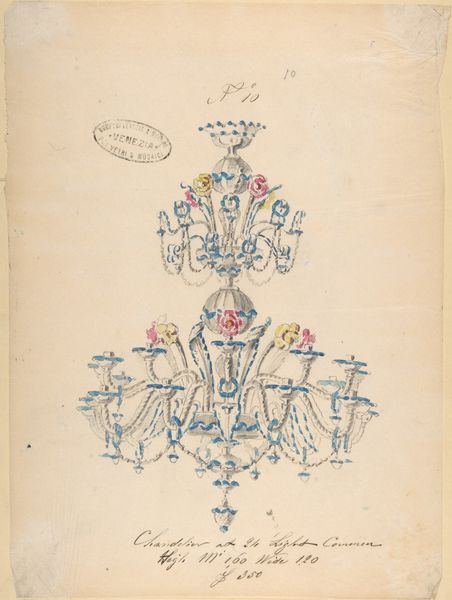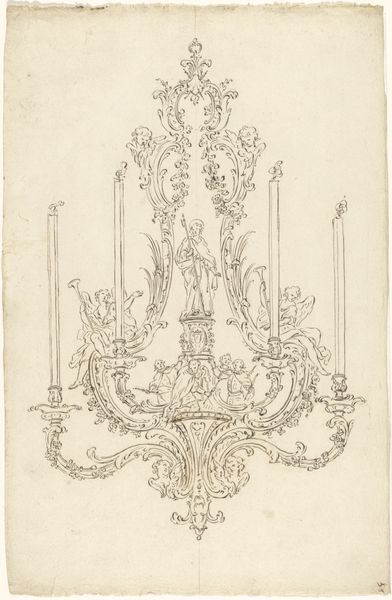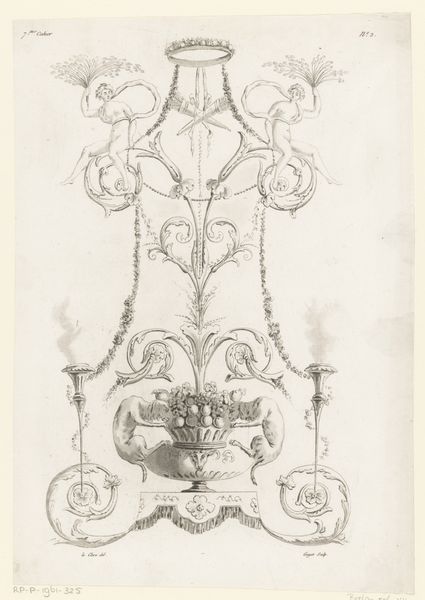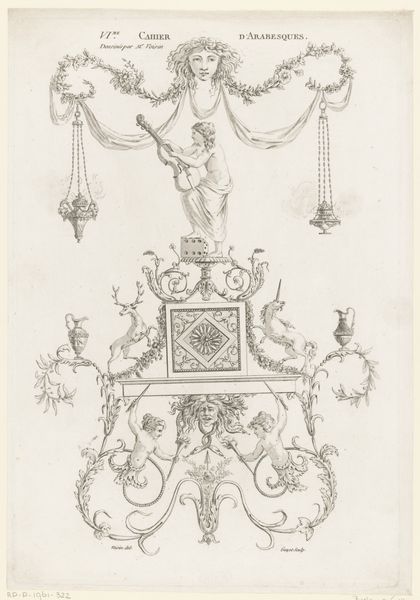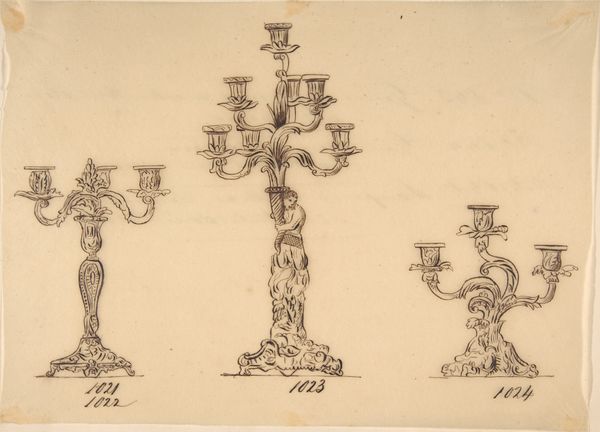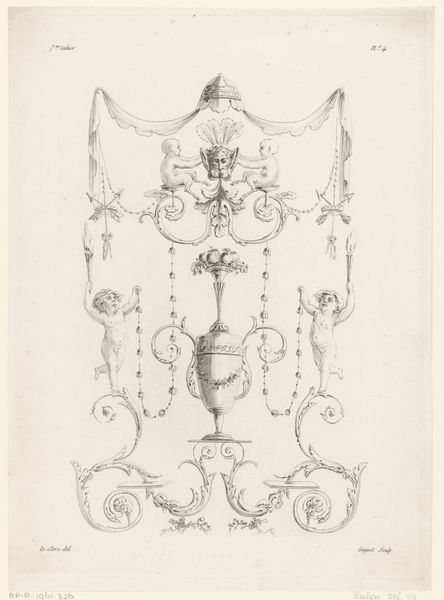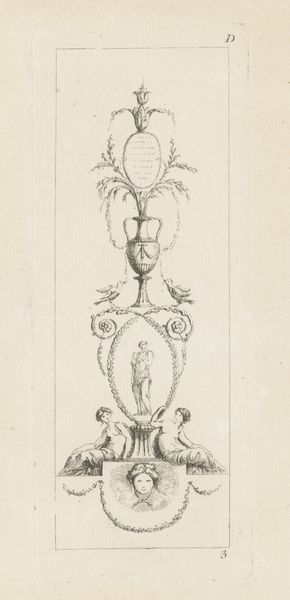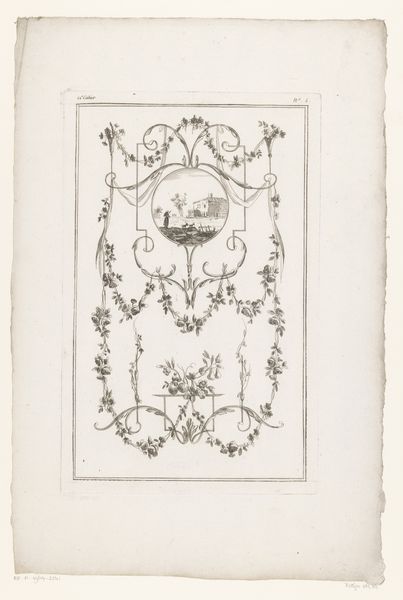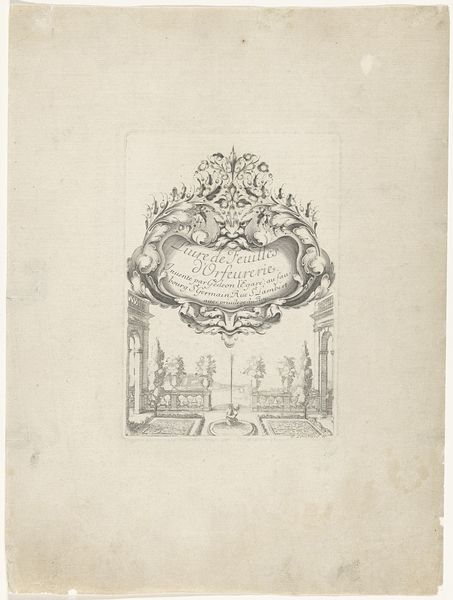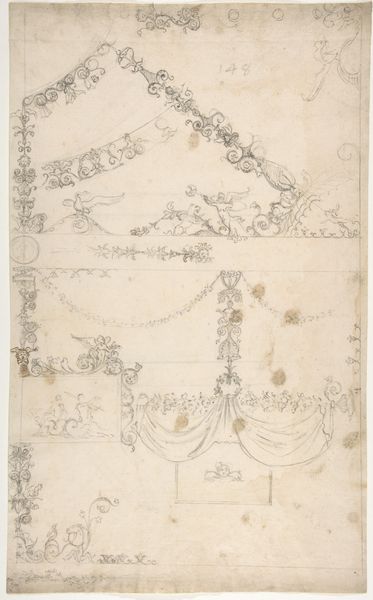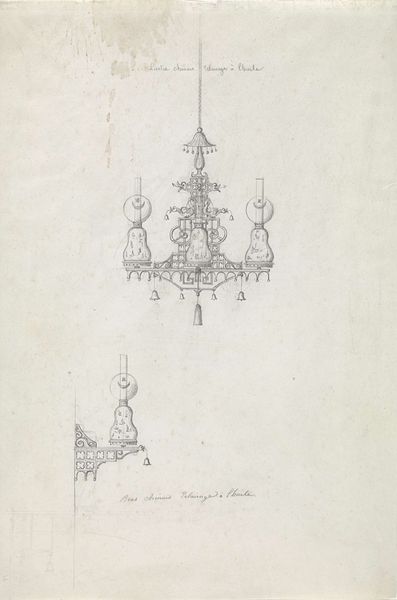
One of Twenty-Three Sheets of Drawings of Glassware (Mirrors, Chandeliers, Goblets, etc.) 1850 - 1880
0:00
0:00
drawing, print, pencil
#
drawing
# print
#
pen sketch
#
geometric
#
pencil
#
pen work
Dimensions: 14 x 19 in. (35.6 x 48.3 cm)
Copyright: Public Domain
Editor: Here we have “One of Twenty-Three Sheets of Drawings of Glassware,” made sometime between 1850 and 1880 by the Compagnia di Venezia e Murano. It seems to be a study, a sketch of a chandelier design, done in pencil. The delicacy of the lines, the repeating curves – it's very ornate, almost like lace. How do you read this work, considering its formal elements? Curator: Indeed. Note first the emphasis on line: thin, precise, used to articulate the complex forms. Consider how the artist uses shading sparingly, focusing instead on outlining the shape and details of the chandelier. The composition is centrally focused and relatively symmetrical. Are these choices purely functional or aesthetically driven, and how does that choice influence the work? Editor: So, the artist seems most concerned with capturing the *form* of the object. Are there underlying principles at play in this construction of form? Curator: Precisely. Consider the arrangement: verticality countered by radial symmetry, creating balance and visual interest. Are the curves purely ornamental, or do they subtly reflect or refract light? Think of the materiality of glass, and how line might mimic its delicate and light-catching nature. And how would changes to this design– such as elongating particular lines or incorporating asymmetrics– affect the ultimate piece, and our view of it? Editor: That's fascinating – how the artist anticipates the properties of the glass through the drawing itself. So, we’re looking at the drawing as a self-contained aesthetic object, almost independent of the chandelier it depicts? Curator: Yes, we can appreciate the artist's skillful rendering of form and light through line, shadow, and form while bracketing external considerations like purpose and use. Did exploring line and form illuminate something new for you? Editor: Absolutely. Thinking about how line quality translates to material is something I hadn’t considered.
Comments
No comments
Be the first to comment and join the conversation on the ultimate creative platform.

